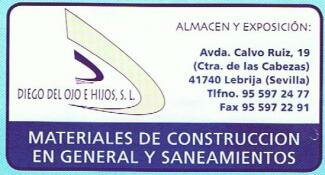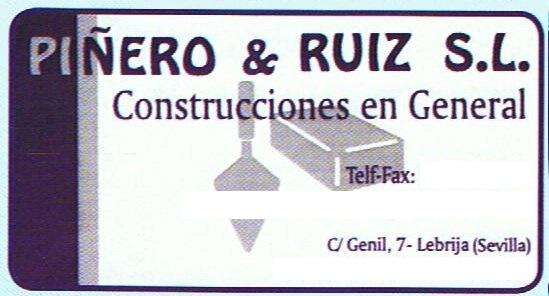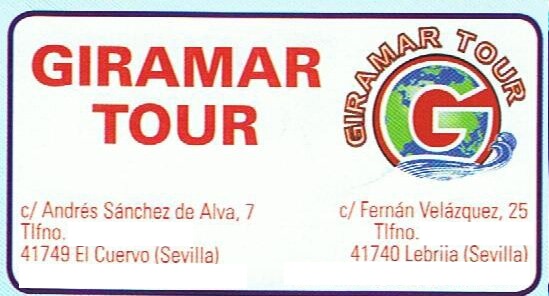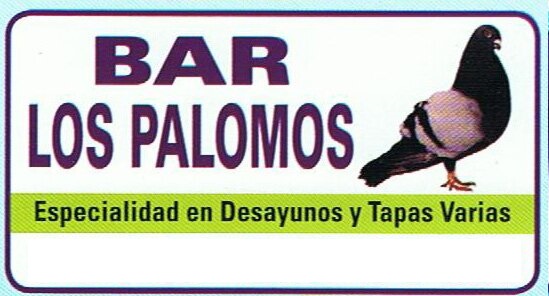

Unión Balompédica Lebrijana
- Club.
- Actualidad .
 Última hora Club
Última hora Club- Noticias
- Comunicados
- Entrevista
- Cartelera
- Crónicas
- Documentos
- Porra
- Actividades
 ACTUALIDAD
ACTUALIDAD
- Equipo
- Futbol base .
- Foro
- Patrocinadores
What Is A Raumdeuter Role? Finding Space Effectively
When you watch a soccer match, you might notice certain players seem to appear in the right place at just the right time, finding pockets of space no one else sees. That’s no accident—it’s the essence of the Raumdeuter role. If you've ever wondered how some attackers make breaking down tight defenses look effortless, understanding this intriguing position might just change how you see the game’s tactical side.
The Origins and History of the Raumdeuter
The term "Raumdeuter," which translates to "space interpreter," was introduced to football terminology by Thomas Müller in a 2011 interview. Its roots can be traced back to Bayern Munich's tactical approach under manager Louis Van Gaal during the 2009-10 season.
Here, Müller developed his ability to exploit space through strategic positional play. Under Pep Guardiola, Bayern Munich's possession-based style further enhanced Müller’s role as a Raumdeuter. This tactical framework provided him with the freedom to maneuver and excel in identifying gaps in the opposition’s defense.
His contributions to the team during this period are significant, reflecting his impact on the game: in 291 appearances, Müller registered 106 goals and 121 assists. These statistics underscore his effectiveness and effectiveness as a Raumdeuter within the context of modern football, establishing him as a noteworthy figure in discussions about positional play and tactical innovation.
Defining the Raumdeuter Role in Modern Soccer
The Raumdeuter role in modern soccer is characterized by a heightened spatial awareness that distinguishes it from traditional attacking positions.
Players in this role, such as Thomas Müller, utilize their tactical understanding to navigate and exploit spaces within and around the penalty area. This involves a strategic movement where they position themselves in gaps between defenders, thereby creating goal-scoring opportunities both for themselves and their teammates.
The effectiveness of Raumdeuters is reflected in their statistical contributions, including assists and goals.
Their ability to read the game and make immediate decisions plays a crucial role in the fluid dynamics of modern attacking tactics. Furthermore, Raumdeuters often employ technical skills to manipulate defenders’ positions, thereby enhancing their team’s offensive structure.
As soccer continues to evolve, the importance of such roles that emphasize spatial awareness and intelligent movement becomes increasingly evident.
How Raumdeuters Exploit Space on the Pitch
Mastery of movement plays a crucial role in how Raumdeuters exploit space on the football pitch. Players adopting the Raumdeuter position effectively become adept at identifying and maneuvering into areas of the field that are often overlooked by defenders.
For instance, Thomas Müller exemplifies this role with his ability to make intelligent movements, such as executing double runs and utilizing precise timing, which allow him to evade his marker and receive the ball in critical attacking zones.
Unlike traditional attackers who may adhere to fixed positions, Raumdeuters focus on manipulating defensive lines by exploiting their vulnerabilities. This involves taking advantage of blind spots and gaps in the defense to optimize scoring opportunities.
Spatial awareness is essential for a Raumdeuter, as it enables the player to anticipate the movements of both teammates and opponents. This anticipation allows Raumdeuters to remain prepared to capitalize on any lapses in defensive concentration or positional organization, enhancing their effectiveness in offensive situations.
Essential Skills and Attributes for a Raumdeuter
To perform effectively as a Raumdeuter, players require a specific set of skills and attributes that differentiate them from others. A critical aspect of this role is the ability to find space on the field, which depends on strong spatial awareness and the capacity to anticipate movements of both teammates and opponents.
Players who excel in this position demonstrate an adeptness in maneuvering into strategically advantageous areas, often evading their markers. Technical proficiency is another essential component, as the ability to maintain precise ball control and dribbling is vital for navigating congested areas and preserving possession, particularly in proximity to the goal.
Moreover, decision-making skills are key; players must be able to make quick, instinctive choices in high-stakes situations, where the game's dynamics can shift rapidly. Additionally, physical attributes such as high endurance and strength are important. These traits enable players to sustain their performance throughout the match and exert influence on the game from beginning to end.
Collectively, these skills and attributes contribute to the overall effectiveness of a Raumdeuter in executing their role within a team structure.
Comparison With Other Attacking Roles
The Raumdeuter distinguishes itself from other attacking roles through its specific focus on movement and spatial awareness rather than traditional positional play. Unlike the conventional striker, who primarily operates within the center of the pitch, or the False 9, who often drops deeper to facilitate play, the Raumdeuter, exemplified by players like Thomas Müller, actively seeks to occupy unmarked spaces.
This role is characterized by runs that prioritize tactical positioning rather than individual flair. Players in this position often capitalize on disorganized defenses, converting opportunities into goals or assists through timely and strategic movements.
In contrast to playmaking positions such as the Trequartista, which emphasize creative orchestration and distribution, the Raumdeuter is less involved in the buildup play and more focused on seizing defensive vulnerabilities.
Notable Players Who Exemplify the Raumdeuter Style
Among modern footballers, a select group exemplifies the Raumdeuter style, characterized by the effective utilization of space in attacking play.
Thomas Müller is often recognized as the originator of this tactical concept, having scored 106 goals and provided 121 assists in 291 matches. His ability to find and exploit space has made a significant impact on his team's offensive strategy.
Additionally, Dele Alli, during his tenure at Tottenham Hotspur, has demonstrated similar traits. He adeptly identifies pockets of space within the final third, enabling him to create goal-scoring opportunities consistently.
José Callejón, during his time at Napoli, utilized precise movement and timing to navigate gaps between defenders, effectively driving his team’s attacks.
Other notable players such as Lionel Messi and Raúl Jiménez also display Raumdeuter characteristics. Their spatial awareness allows them to make critical contributions to their teams while unsettling opposing defensive lines.
This style of play emphasizes the importance of positioning and movement, which can be integral to a team's attacking effectiveness.
Tactical Impacts on Team Attack and Defense
When a team employs a Raumdeuter, its attacking strategy becomes more unpredictable, which can pose challenges for opposing defenses. A player in this role, such as Thomas Müller, is known for navigating between defenders to find and exploit space. This movement facilitates a connection between the midfield and attack, potentially enhancing the team's creativity and leading to increased scoring opportunities.
The presence of a Raumdeuter requires opposing teams to continually adjust their defensive strategies due to the player’s ability to occupy and exploit gaps in their formation.
Additionally, a competent Raumdeuter contributes defensively by tracking back and applying pressure, which aids in regaining possession and maintaining balance between attacking and defensive responsibilities. This dual role can be pivotal in reinforcing a team's overall performance on the field.
The Evolution of the Raumdeuter Under Various Managers
The Raumdeuter role has its origins in conventional attacking positions, but its significant evolution occurred at Bayern Munich under manager Louis van Gaal. Van Gaal allowed Thomas Müller to focus on interpreting space rather than adhering to the touchline or maintaining a fixed position. This marked a shift in how attacking players could contribute beyond traditional boundaries.
Subsequently, Pep Guardiola further developed this concept by integrating spatial interpretation with systematic attacking strategies, facilitating Müller’s role as a shadow striker within the framework of modern football. Under Guardiola’s stewardship, Müller experienced heightened effectiveness, demonstrating the tactical advantages of the Raumdeuter position.
In alignment with these developments, clubs like RB Leipzig have adopted similar tactical principles, emphasizing intelligent player movement and spatial awareness as central components in breaking down compact defenses, particularly in high-pressure match scenarios.
This evolution showcases the ongoing adaptation of attacking roles in response to changes in managerial philosophies and tactical demands within the sport.
Challenges and Limitations of the Raumdeuter Role
The Raumdeuter role presents a distinctive approach in football, characterized by its emphasis on spatial awareness and opportunistic positioning. This tactical role demands ongoing awareness of both the ball and surrounding defenders, necessitating quick decision-making to identify and exploit minute openings in opposition defenses. The inherent unpredictability associated with the Raumdeuter can complicate the implementation of structured team strategies, as the player often prioritizes individual movement over rigid positioning.
A critical aspect of this role is the need for adaptability. Raumdeuters must balance their offensive duties with defensive responsibilities, particularly in pressing situations. Failure to track back can create vulnerabilities in the team's defensive line, underscoring the importance of maintaining defensive discipline while engaging in forward play.
In scenarios against well-organized defenses, the potential for a Raumdeuter to find space diminishes, as defenders are typically prepared to mark or close down these fleeting opportunities swiftly. This can significantly limit the player’s effectiveness, requiring rapid adjustments to maintain involvement in the game.
Furthermore, while instinctive decision-making is essential for success in this role, an overly prescriptive coaching approach may hinder a player's natural creativity. If a coach imposes rigid tactical frameworks, the Raumdeuter’s ability to contribute effectively in attack may be compromised, leading to a reduction in overall impact on the game.
The Outlook for Raumdeuter Players in Future Football
Raumdeuters are positioned uniquely in the evolving landscape of football, particularly as modern tactics increasingly emphasize spatial awareness and versatility. Traditionally, players in this role have encountered challenges within rigid tactical frameworks; however, this trend is shifting.
Recent analytical advancements provide insights into player movement and goal contributions, which are instrumental for assessing player effectiveness and informing talent development.
The success of players like Thomas Müller has prompted youth academies to focus more on cultivating Raumdeuters, thereby enhancing the visibility and relevance of this position.
With the ongoing evolution of football tactics and the implementation of various pressing systems, Raumdeuters have shown an ability to adapt by effectively utilizing space and generating scoring opportunities.
Moreover, as teams seek to optimize their attacking strategies, the role of the Raumdeuter is anticipated to grow in importance. Their capacity to exploit gaps in defensive formations can provide significant advantages.
Observing these trends suggests that Raumdeuters may become a key component of competitive teams, thus influencing the future dynamics of football tactics.
Conclusion
As you’ve seen, mastering the Raumdeuter role means more than simply running into space—it’s about sensing the game’s flow and making every movement count. If you want to add a new dimension to your attacking play, study the art of interpreting space and learn from players like Thomas Müller. This unique role’s impact will only grow as football evolves, so don’t underestimate the power of intelligence and anticipation on the field.
Unión Balompédica Lebrijana. Fundado en 1928, correo cantera- Grupo Web Deportiva SL Aviso legal Mapa web























